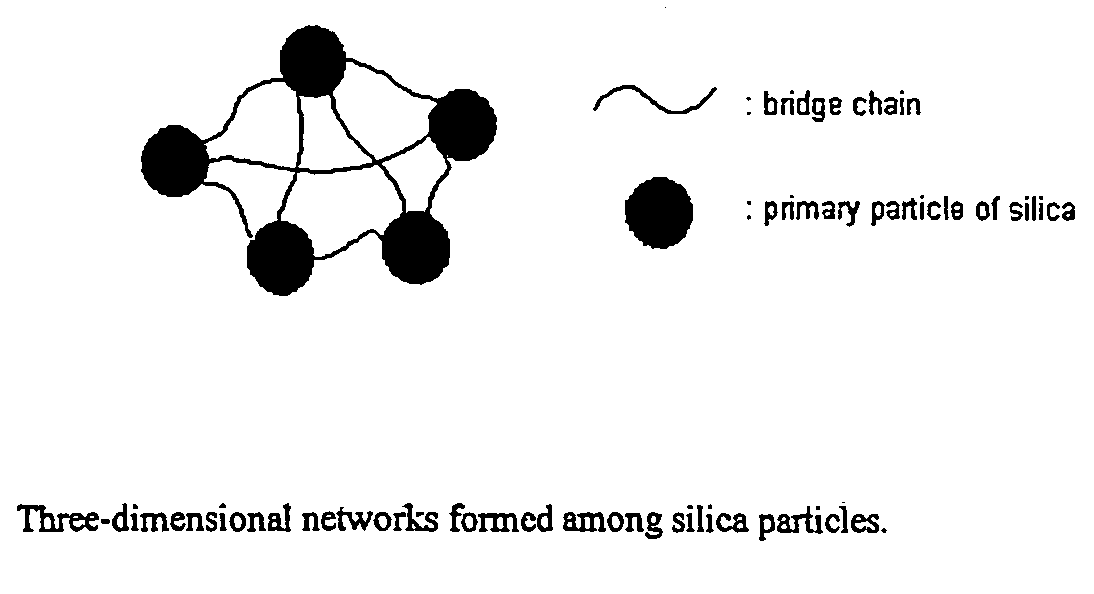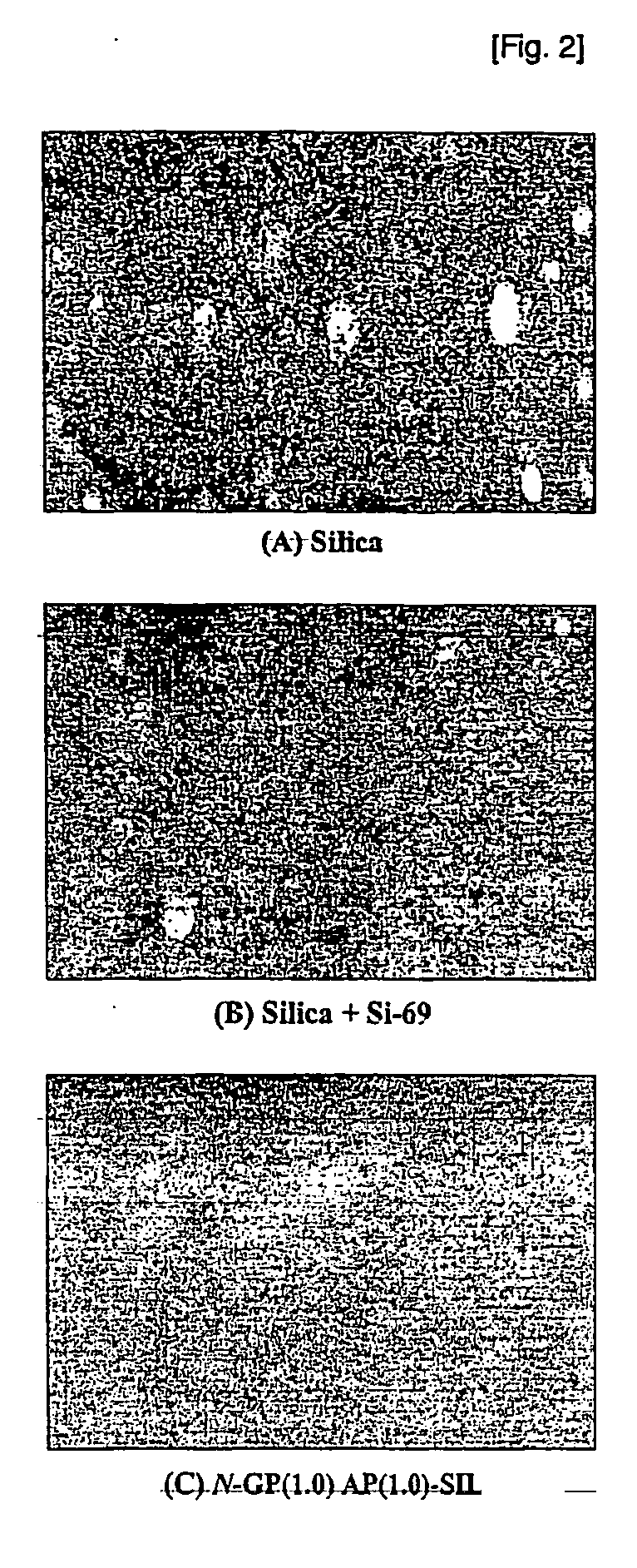Network silica for enhancing tensile strength of rubber compound
- Summary
- Abstract
- Description
- Claims
- Application Information
AI Technical Summary
Benefits of technology
Problems solved by technology
Method used
Image
Examples
example 1
Preparation of Network Silica by Three-Step Reactions
[0033] Silica with a large amount of silanol groups thereon was used as the raw material for the preparation of networked silica. Fine silica powder was dehydrated at 300° C. for 1 hour in an electric furnace to remove adsorbed water. After cooling it in a vacuum desiccator to room temperature, 50 g of dehydrated silica was charged in a 1 L 3-neck round-bottomed flask. 600 mL of an anhydrous ethanol of was added to extract remained water up to extremely low level of water content to prevent side reactions of alkoxy silane with water. The mixture was stirred by using a mechanical stirrer at 400 rpm for 30 min. After decanting the used ethanol contaminated with a small amount of water, 50 mL of fresh ethanol was supplied repeatedly two more times for the complete removal of water. And decanting ethanol carefully, 24 g of 3-glycidoxypropyl trimethoxy silane (GPTS) solution in 600 mL of toluene was added to the flask equipped with a ...
example 2
Preparation of Networked Silica by Two-Step and One-Step Processes
[0037] Three-step reactions are required for the preparation of the N-GP(0.6)AP(0.6)-SIL networked silica. However, these reaction steps can be reduced by using connecting materials having two functional group. The GP(0.6)-SIL silane-coupled silica was prepared following the procedure described in EXAMPLE 1. The reaction of the GP(0.6)-SIL with hexamethylenediamine produces networked silica by combining glycidyl groups of silica particles with amine groups of the connecting materials. Detail procedure for the preparation is given below: 20 g of the GP(0.6)-SIL silica was suspended in 300 mL of toluene. 1.4 g of hexamethylenediamine was added to the suspension, and the mixture was refluxed in a 500 mL round-bottomed flask at 110° C. for 4 hours. Amine groups of hexamethylenediamine react with glycidyl groups of the GP(0.6)-SIL silica, to produce networked silica with bridge chains composed of hexamethylene skeletal am...
example 3
The Investigation of Reinforcing Performance of Networked Silica
[0040] Rubber compound containing networked silica was prepared by mixing rubber with other additives. Their curing characteristics were examined form their rheocurves and viscosity measurements during curing process. And tensile tests of rubber compounds provide reinforcing performance of networked silica added to them. Compositions of rubber compounds used in the tests were simplified to observe clearly the contribution of networked silica to their tensile properties. Table 1 showed the compositions of RI rubber compounds based on solution-polymerized styrene-butadiene rubber (S-SBR). Rubber and additives were mixed in an internal mixer. At first, S-SBR was masticated for one minute. After adding silica, coupling reagent and aromatic oil, a primary master batches of RI rubber compounds were obtained by mixing the rubber containing various additives at 150-160° C. for three minutes. After masticating the primary mater...
PUM
| Property | Measurement | Unit |
|---|---|---|
| Temperature | aaaaa | aaaaa |
| Tensile properties | aaaaa | aaaaa |
| Mechanical properties | aaaaa | aaaaa |
Abstract
Description
Claims
Application Information
 Login to view more
Login to view more - R&D Engineer
- R&D Manager
- IP Professional
- Industry Leading Data Capabilities
- Powerful AI technology
- Patent DNA Extraction
Browse by: Latest US Patents, China's latest patents, Technical Efficacy Thesaurus, Application Domain, Technology Topic.
© 2024 PatSnap. All rights reserved.Legal|Privacy policy|Modern Slavery Act Transparency Statement|Sitemap



